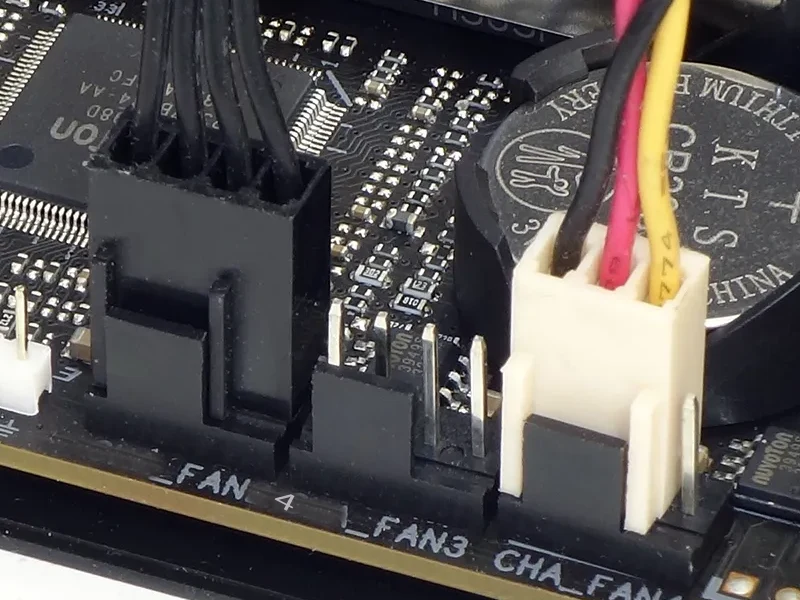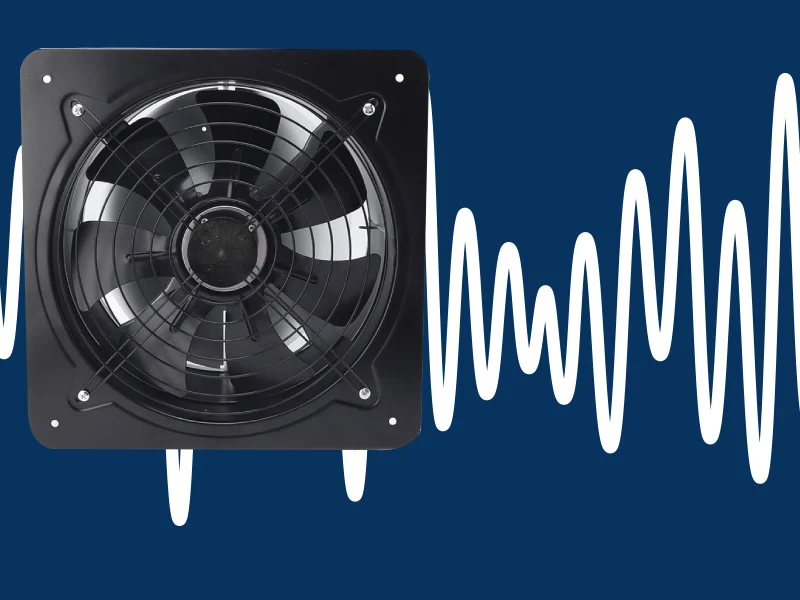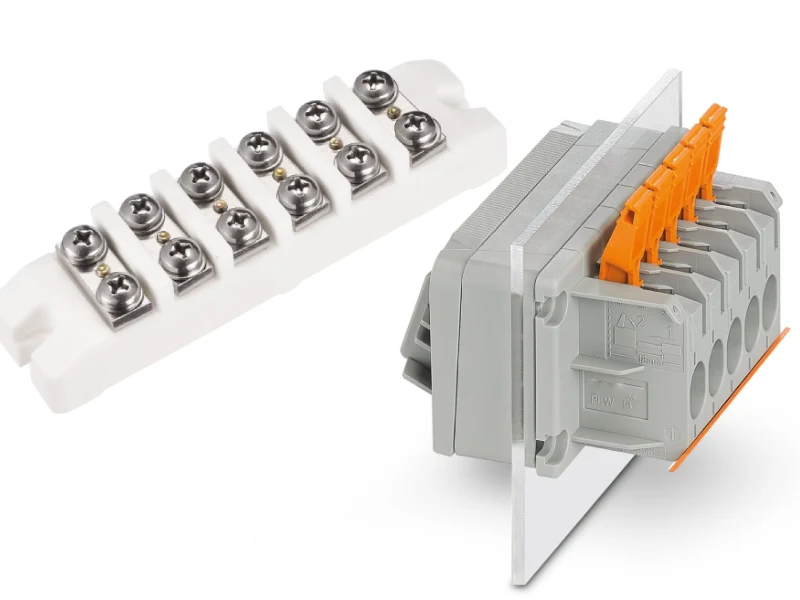Junction box knockouts are pre-scored or partially cut openings on the sides, top, bottom, or back of an electrical junction box. These designed weak points allow electricians to easily create entry and exit points for electrical conduits, cables, or raceways into the enclosure. By strategically removing the appropriate knockouts, wires can be safely routed into the junction box to make connections and distribute power.
The purpose of knockouts is to provide flexibility during electrical installations. Instead of having to drill custom holes, which can be time-consuming and potentially damage the box, electricians can simply use tools like a screwdriver and hammer or knockout pliers to cleanly remove the necessary openings. This ensures a secure and code-compliant entry point for wiring, protecting the conductors from abrasion and the environment within the confines of the junction box.
What Is Junction Box Knockout

What is knockout in junction box?
Junction box knockouts are pre-scored or partially stamped openings located on the sides, top, bottom, or back of an electrical junction box. These circular or sometimes rectangular sections of metal or plastic are designed to be easily removed, creating precisely sized holes that allow electrical cables or conduits to enter the box. The purpose of knockouts is to provide flexibility during installation, enabling electricians to bring wiring into the enclosure from various directions without needing to drill or cut into the box itself.
These knockouts come in standard trade sizes to accommodate different diameters of conduits and cable connectors. Typically, a junction box will have multiple knockouts of varying sizes, often concentric rings that can be removed individually or in combination to achieve the required opening size. This design allows the installer to select and remove only the necessary knockouts, keeping the remaining enclosure sealed to protect the internal wiring from dust, moisture, and physical damage, while also maintaining the box’s structural integrity.
How to Knockout Junction Box

Creating clean and appropriately sized openings in a junction box, known as knocking out, is a fundamental skill in electrical work. These knockouts allow for the secure entry of conduits and cables into the enclosure, protecting the wiring and ensuring a safe and organized installation.
Using the correct tools and techniques is crucial to avoid damaging the box or creating openings that are too large, which could compromise the integrity of the enclosure. This guide will walk you through the standard procedure for effectively knocking out a junction box.
Step 1: Select the Appropriate Knockout and Tool
Begin by identifying the knockout on the junction box that corresponds to the size of the conduit or cable connector you will be using. Most junction boxes have concentric knockouts of varying sizes, indicated by circular score marks.
Choose the innermost ring that matches the trade size of your connector. Once you’ve identified the correct knockout, select the appropriate tool for the job. The most common tool is a screwdriver (typically a flathead) paired with a hammer. For larger or more numerous knockouts, a specialized knockout punch set can provide a cleaner and more efficient result. Ensure your tools are in good condition and suitable for the material of the junction box (metal or plastic).
The selection of the correct knockout is critical for a secure and code-compliant installation. An opening that is too small will prevent the connector from fitting, while one that is too large can leave gaps, compromising the box’s protection against dust and moisture and potentially violating electrical codes.
Using the right tool will make the knockout process easier and reduce the risk of damaging the junction box. A screwdriver and hammer are versatile for occasional knockouts, while a knockout punch set provides a cleaner, more precise hole, especially beneficial for metal boxes and when multiple knockouts are needed.
Step 2: Position the Tool and Strike
Place the tip of your flathead screwdriver firmly against the edge of the inner ring of the selected knockout. Position the screwdriver at a slight angle to the surface of the box, aiming to strike the knockout tangentially. Once the screwdriver is in position, use a hammer to strike the end of the screwdriver handle with a firm, controlled blow. You don’t need excessive force; a few moderate taps should be sufficient to start the knockout bending inward.
For larger knockouts or thicker metal, you may need to reposition the screwdriver around the circumference of the knockout and repeat the hammering process at several points to ensure a clean break.
The key to a clean knockout is applying controlled force in the right location. Aiming tangentially at the edge of the knockout helps to shear the metal or plastic along the pre-scored line. Avoid using excessive force with a single blow, as this can deform the box or create a jagged edge.
Instead, use a series of firm, directed taps. For plastic boxes, the process is often quicker and requires less force. If using a knockout punch set, follow the manufacturer’s instructions, which typically involve inserting the die into the knockout and tightening it with a wrench to punch out a clean, round hole.
Step 3: Remove the Knockout and Smooth the Edges
After striking the knockout a few times around its circumference, it should be loose enough to remove. You can typically use the tip of your screwdriver or pliers to gently pry the knockout the rest of the way out of the junction box. Be careful when removing the knockout, as the edges might be sharp, especially on metal boxes.
Once the knockout is removed, inspect the resulting opening. If there are any sharp or jagged edges, use a file or deburring tool to smooth them out. This will prevent damage to the wires or cable sheathing as they are pulled through the opening.
A clean and smooth knockout opening is essential for protecting the integrity of the wiring. Sharp edges can chafe or cut the insulation of conductors, leading to shorts or ground faults. Taking the extra time to deburr the edges ensures a professional and safe installation.
For plastic boxes, the edges are usually smoother after knockout, but it’s still worth a quick check. Dispose of the removed knockouts properly to keep your work area clean and safe. The resulting hole should now be the correct size and shape to accept your chosen conduit or cable connector securely.
How to Remove Junction Box Knockout

Removing a knockout from a junction box might seem simple, but using the correct technique and tools is crucial to avoid damaging the box itself or creating an unsafe opening. Typically, you’ll use a flathead screwdriver and a hammer, or specialized knockout pliers for a cleaner removal.
The goal is to carefully dislodge the pre-scored section without bending the surrounding metal or plastic of the box, ensuring a clean and appropriately sized opening for your conduit or cable connector.
Step 1: Position the Screwdriver or Tool
Place the tip of a sturdy flathead screwdriver firmly against the inner edge of the knockout you intend to remove. For circular knockouts, position the screwdriver tangentially on the edge. If using knockout pliers, ensure the jaws are securely gripping the knockout.
The precise placement of your tool is important to direct the force effectively and avoid slipping, which could damage the box or your hand. Applying pressure or striking at the correct point will initiate the bending or shearing of the knockout along its pre-scored line.
Step 2: Apply Force to Dislodge the Knockout
Using a hammer, strike the end of the screwdriver handle with firm, controlled taps. The force should be directed inward, towards the center of the knockout. For larger or tougher knockouts, you may need to reposition the screwdriver around the circumference and repeat the tapping process at several points to gradually loosen it.
If using knockout pliers, firmly squeeze the handles, applying steady pressure to bend and detach the knockout. Avoid excessive force with a single blow, as this can deform the box or create jagged edges. The key is controlled, repeated pressure or strikes to work the knockout free along the pre-scored lines.
Step 3: Remove and Inspect the Opening
Once the knockout is sufficiently loosened, you should be able to remove it completely by hand or with the help of pliers. Be cautious as the edges of the removed knockout and the resulting opening might be sharp, especially with metal boxes.
After removal, carefully inspect the opening to ensure it is the correct size and shape for your intended connector. If there are any rough or jagged edges, use a file or deburring tool to smooth them out. This step is crucial for protecting the insulation of the wires or cables that will pass through the opening, preventing potential damage and ensuring a safe installation.
What Size Are Knockouts on a Junction Box

The sizes of knockouts on a junction box are standardized to accommodate various sizes of electrical conduit and cable connectors. These sizes are typically referred to by their “trade size,” which doesn’t directly correspond to the actual diameter of the knockout.
Junction boxes often feature multiple knockouts of different sizes on various sides, providing flexibility for wiring entry. Common trade sizes found on junction boxes include 1/2 inch, 3/4 inch, 1 inch, 1-1/4 inches, 1-1/2 inches, and 2 inches. Larger junction boxes electronic may also include knockouts up to 3 inches or more for industrial applications.
It’s important to note that the actual diameter of the knockout is slightly larger than the trade size of the conduit or fitting that will be used with it. This extra space allows for the threads of connectors to pass through and be secured with locknuts.
For example, a 1/2-inch conduit typically requires a knockout with an actual diameter around 7/8 inch. Many junction boxes also utilize concentric knockouts, which consist of several rings that can be removed individually or together to create different-sized openings as needed, offering greater versatility for different wiring requirements.
Here are some common trade sizes and their approximate corresponding knockout diameters:
- 1/2 inch trade size: Approximately 7/8 inch diameter
- 3/4 inch trade size: Approximately 1-1/8 inch diameter
- 1 inch trade size: Approximately 1-3/8 inch diameter
- 1-1/4 inch trade size: Approximately 1-5/8 inch diameter
- 1-1/2 inch trade size: Approximately 1-7/8 inch diameter
- 2 inch trade size: Approximately 2-1/2 inch diameter
Here is a table about the sizes of knockouts on a junction box in the following:
| Trade Size (inches) | Approximate Knockout Diameter (inches) | Common Conduit/Connector Use |
|---|---|---|
| 1/2 | 7/8 | Smallest conduit, some cable clamps |
| 3/4 | 1-1/8 | Common for residential wiring |
| 1 | 1-3/8 | Larger conduit runs |
| 1-1/4 | 1-5/8 | Larger conduit runs |
| 1-1/2 | 1-7/8 | Larger conduit runs |
| 2 | 2-1/2 | Main feeders, larger systems |
Junction Box Cover With Knockout
A junction box cover with a knockout is a specialized lid designed to enclose an electrical junction box while providing a pre-punched, typically circular, opening. This knockout allows for the insertion and secure connection of electrical conduits, cables, or fittings directly through the cover itself, offering an alternative entry point to the standard knockouts found on the sides or back of the box. These covers are particularly useful in specific wiring configurations or when space constraints necessitate entry from the top or bottom of the enclosure.
Purpose of the Cover Knockout
The primary purpose of a knockout on a junction box cover is to provide an additional or alternative access point for wiring into the box. This can be advantageous when direct entry through the box’s sides or back is obstructed or less convenient for the wiring layout.
By utilizing a cover knockout, electricians can achieve a cleaner and more direct wiring path, especially in situations where surface mounting conduits or specific fixture installations require entry from the top or bottom of the junction box. This feature enhances the flexibility of wiring configurations and can simplify complex installations.
Types and Sizes of Knockouts
Knockouts on junction box covers come in various standard trade sizes, similar to those found on the boxes themselves, to accommodate different diameters of conduits and cable connectors. Common sizes include 1/2 inch, 3/4 inch, and 1 inch, among others.
Some covers may feature concentric knockouts, offering the option to create different sized openings as needed. The type of knockout can also vary, with some being the standard punch-out style while others might be threaded to directly accept certain fittings, providing a secure and code-compliant connection point directly on the cover.
Installation Considerations
When using a junction box cover with a knockout, it’s crucial to select the correct size knockout for the intended conduit or connector to ensure a tight and secure fit. After removing the appropriate knockout, a suitable connector must be installed to protect the wires as they enter the box and to provide strain relief.
Proper installation ensures that the wiring is secure and that the enclosure remains protected against environmental factors. Additionally, always ensure that the total number of conductors entering the box, including those through the cover knockout, does not exceed the box’s fill capacity as specified by electrical codes.
Conclusion
In conclusion, junction box knockouts are indispensable features that provide electricians with the flexibility to route wiring efficiently into electrical enclosures. Their pre-scored design allows for easy removal, creating precisely sized openings for various conduit and cable types. Understanding how knockouts work is crucial for proper installation and maintaining the integrity of the electrical system.
Selecting the appropriate knockout size and type ensures a secure and code-compliant connection, preventing damage to wiring and protecting the internal components from environmental factors. Utilizing knockouts correctly contributes to a safe and organized electrical installation, facilitating future maintenance and modifications.
Need junction boxes with custom knockout configurations? Linkwell Electronics offers tailored solutions to meet your specific project requirements. Contact us today to discuss your needs and ensure a perfect fit for your wiring applications. Choose Linkwell for reliable and customized junction box solutions.




